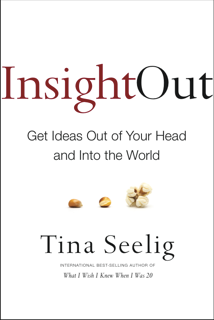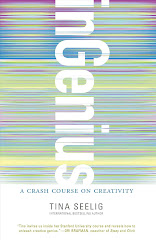
- Question: How does making stuff out of rubber bands and paper clips over the span of a few days transfer to the reality of the long-lasting grind of innovating, marketing, and supporting products?
Answer: In the exercise you’re referring to students are given a handful of paperclips or rubber bands and are challenged to create as much value as possible in only a few days. Value can be measured in any way they like. The lessons they learn are priceless: They realize that there are opportunities everywhere, that they can easily leverage limited resources, and that they can create real value in only a few days.Also, they experience the power of rapid prototyping, effective teamwork, and how to execute on a plan. It is amazing to see the range of solutions from teams from around the world. This exercise reinforces the idea that life is the ultimate open-book exam—the doors are thrown wide open, which allows you to draw on endless resources to tackle open-ended problems in creative ways.
- Question: But what makes you think that the companies have wide-open doors, endless resources, and open-ended problems?
Answer: It is up to each individual to see it that way. Most jobs involve projects that don’t have one right answer. It is up to each individual to discover the best solutions using whatever resources they can find. These solutions don’t have to cost a lot of money. They often involve identifying other people who can help, leveraging work that has been done before, or combining ideas in new and interesting ways.This is just as true for a CEO as it is for engineers, sales people, lawyers, teachers, chefs, and even babysitters. We often limit ourselves by not seeing all the resources in our midst. However, those who do see that the doors really are wide open, who can reframe problems, and who can creatively draw upon the endless resources in their midst are much more successful in both the short run and the long run.
- Question: How should a college student decide what to study?
Answer: When I started college I was a pre-med student. Right after I got to college I asked a girl in my dorm if she would help me with a calculus problem. She refused, saying that if she helped me, I would get into med school, and she wouldn’t. She was so focused on her long-term goals that she wasn’t able to engage in everyday relationships. That was a huge wake-up call. I was forced to rethink my plans and realized that I should do what interests me and figure out the things that I do best instead of staying on a pre-planned path that might lead me somewhere I didn’t want to go. Now I encourage students to do the same thing—that is, spend time trying lots of different things so that they can see where their passions take them and where they can really shine.
- Question: What should a college student look for in a first job?
Answer: The most important thing to remember is that your first job probably won’t even be on your resume in a few years. With that in mind, it makes sense to take a job that will put you in a position to learn as much as possible. Don’t be worried about the title or the salary and focus on with whom you will be working. Remember—and this is important—that when you get a job, you are not getting THAT job, but the keys to the building. Once you are inside, you will find endless ways to expand your role, to build your credibility, and to excel.
- Question: What should a person do in her first week on the job?
Answer: I wish someone had told this to me when I was getting out of school. You should spend the first weeks on a job figuring out what is really going on. The stated culture of an organization is often quite different from the real culture. And formal titles don’t necessarily reflect real influence in the company. Also, use the first few weeks to set the tone for your working style. People will draw conclusions about you very quickly, and you will want those conclusions to be accurate. Finally, figure out if there is someone who might be willing to be an informal mentor—someone you can go to to ask for help, especially at the beginning when it isn’t clear how the organization really works.
- Question: Is there anything you “knew” at twenty that turned out to be still true?
Answer: I was a kid who never liked to follow the rules. Other people make rules for you to make life easier for them not for you. For example, when you ask someone how to get into graduate school, make a movie, write a book, or run for political office, they will give you a recipe with a set of incremental steps that gets you closer to the goal. However, many people who have successfully reached those goals have followed a completely different path. If you really want to accomplish something, there is usually a creative way to get there even if the traditional path is blocked.
- Question: What’s the biggest thing that you “knew” at twenty that turned out to be wrong?
Answer: When I was twenty I beat myself up whenever I made a mistake. I thought that I had to do things correctly the first time and spent a lot of time agonizing about what I should have done. In fact, if you aren’t making mistakes, then you aren’t taking enough risks. I was comfortable taking risks, but wasn’t comfortable with the inevitable failures along the way. Now I realize that mistakes are part of the learning process. Now when I make a mistake, I add it to my “failure resume” and figure out what I should do differently the next time.
- Question: What’s the best analogy that describes a career?
Answer: I like the analogy that Carol Bartz, CEO of Yahoo!, used when she spoke at Stanford a few years ago. She said that you should look at the progress of your career as moving around and up a three dimensional pyramid as opposed to up a two dimensional ladder. Lateral moves along the side of the pyramid allow you to build a base of experience. It may not look as though you are moving up quickly, but you are gaining a foundation of skills, experience, and contacts that will prove extremely valuable later.
- Question: When should a company give up on a product or service?
Answer: This is always a hard question. We all know that in order to be successful you have to put in an enormous effort, and many people work for years before their ventures look like overnight successes. Even when others suggest that it is time to cut your loses, you know that with more time you will be able to make it work. However, this can only happen when you are completely committed. If you have lost your passion, it is time to quit. Without a strong drive to succeed, there is no way you will have the energy to ultimately reach escape velocity.
- Question: What is the key to leading people?
Answer: From my experience, one key to leading others is to “paint the target around the arrow.” That is surround yourself with really sharp people—arrows—and make sure that they are doing what they do best. If you empower really talented people to do what they do best, then astonishing things happen. Everyone feels that they are doing the easy job and truly appreciate what everyone else is contributing. Also, figure out what motivates each individual on your team. With that knowledge you can put incentives in place that encourage each person to deliver their best.
- Question: What’s the best way to fix mistakes?
Answer: It is important to correct mistakes quickly. The longer they linger, the bigger they get. As mentioned above, I tend to take lots of risks, and therefore have had lots of opportunities to correct my errors. I find the best approach is to acknowledge the error and move on. If possible, find a way to quickly demonstrate that you have learned from the experience.
- Question: What is the secret to successful negotiation?
Answer: Make sure that you understand the other person’s point of view. If you make assumptions, you will very likely be wrong. When I bought a car for my son. I assumed that the salesperson wanted us to pay the highest price. That wasn’t the case! After asking a bunch of questions, I learned that his commission wasn’t based on the price of the car—it was based on the scores he got on the customer evaluation form we filled out afterward. Of course, I was happy to give him a great score in return for a great price. This is how win-win negotiations come about.
- Question: How does one balance work and “life”?
Answer: You copied a quote from my book into one of your recent blogs. That quote, attributed to the Chinese philosopher Lao-Tzu, is very powerful.
“The master of the art of living makes little distinction between his work and his play, his labor and his leisure, his mind and his body, his education and his recreation, his love and his religion. He simply pursues his vision of excellence in whatever he does, leaving others to decide whether he is working or playing. To him, he is always doing both.”
This is what we should all aspire to—having work that enriches our lives and lives that enrich our work. On the path to this perfect balance, it is best to pick three things that are most important to you and focus on them. This list will change as your priorities change and is a reminder that you can do it all—just not at the same time.




No comments:
Post a Comment